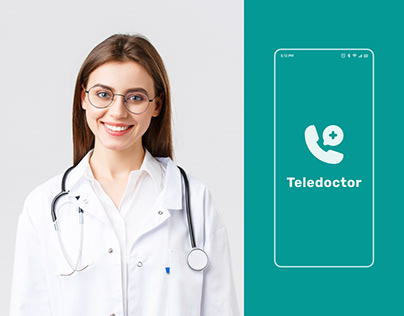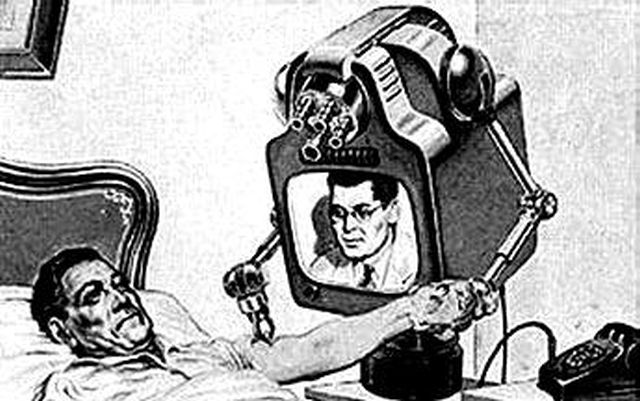Discovering the Advantages and Obstacles of Teledoctors in Modern Healthcare
As the medical care landscape advances, teledoctors have actually become an essential part in bridging spaces in medical access and performance. While they supply the pledge of reaching remote locations and decreasing operational costs, the trip is not without its difficulties. Privacy problems, the digital divide, and cybersecurity dangers position substantial difficulties that need to be addressed to harness their complete possibility. Just how can the medical care sector equilibrium these advantages with the fundamental obstacles? This quandary invites a much deeper exploration right into the transformative duty of teledoctors fit the future of healthcare distribution.
Expanding Access to Treatment
Telemedicine has actually become a crucial technology in contemporary medical care, substantially expanding access to look after diverse populations. By leveraging electronic technology, teledoctors have actually changed the traditional health care distribution model, making it feasible for clients in underserved or remote areas to get prompt clinical assessment. This development is particularly helpful for people staying in rural communities, where the shortage of medical care centers and experts often results in postponed or poor therapy.
Teledoctors are instrumental in bridging the void developed by geographical obstacles. Via digital consultations, patients can access a vast array of health care solutions without the demand for substantial travel.
The integration of teledoctors right into health care systems likewise supports the management of public wellness dilemmas by assisting in fast response and triage. Throughout pandemics, for example, virtual assessments decrease the concern on physical medical care centers, lessening exposure threats for both clients and healthcare suppliers. As telemedicine continues to evolve, it guarantees to reshape the landscape of medical care ease of access, making it more comprehensive and effective.
Cost-Effectiveness of Teledoctors
The cost-effectiveness of teledoctors is a substantial variable driving their widespread adoption in health care systems. By minimizing the demand for physical infrastructure and in-person check outs, teledoctors use an even more economical option to standard medical care distribution.
Moreover, teledoctors assist in a much more effective usage of medical care sources by decreasing unneeded emergency clinic gos to and health center admissions. People can access prompt appointments for small disorders or follow-up treatment, which aids to relieve the worry on overstretched medical care centers. This effectiveness not only results in cost savings for healthcare companies but also reduces the economic pressure on individuals that might or else encounter costly healthcare facility expenses.
Furthermore, teledoctors can aid in taking care of persistent diseases much more effectively by supplying constant surveillance and prompt treatments. This proactive approach can protect against issues, thus reducing lasting treatment costs. In general, teledoctors provide a feasible remedy to the intensifying costs of medical care, while keeping high quality care distribution.
Enhancing Client Ease
While cost-effectiveness plays a crucial role in the surge of teledoctors, improving client convenience stands as one more engaging advantage of this medical care design. With the assimilation of teledoctors, clients can bypass the traditionally taxing process of organizing and attending in-person visits. This version eliminates the requirement for traveling, lowering time spent en route and waiting rooms, consequently offering considerable time financial savings for patients. Specifically for those with flexibility concerns or residing in remote areas, teledoctors supply a vital link to healthcare that could or else be hard to reach.
In addition, teledoctors provide adaptable scheduling, allowing people to organize consultations at times that ideal suit their personal and specialist dedications. This versatility is very useful for individuals balancing requiring job routines or family members responsibilities, making certain that healthcare can be integrated flawlessly into their lives. Furthermore, the capability to accessibility physician from the convenience of one's home can bring about increased client interaction and adherence to therapy strategies, as the obstacles to looking for treatment are reduced.
The benefit supplied by teledoctors not just boosts the person experience but also adds to an extra receptive and effective medical care delivery system, ultimately supporting much better health and wellness end results.
Resolving Personal Privacy Problems
In the middle of the expanding fostering of teledoctors, privacy issues become a considerable consideration. As health care progressively depends on digital platforms, making certain the confidentiality of patient details comes to be extremely important. The digitization of clinical documents and the use of telecommunication innovations demand durable protection procedures to secure sensitive data from unapproved accessibility and violations.
Doctor should follow rigorous guidelines, such as the Medical Insurance Portability and see page Liability Act (HIPAA) in the United States, which establishes nationwide requirements for safeguarding clinical information. Compliance with such regulations is crucial in maintaining person depend important site on and ensuring their information is managed sensibly. File encryption of data, secure interaction channels, and normal audits are a few of the measures that can be applied to improve information security.
Cybersecurity dangers are evolving, and health care companies must stay attentive to new vulnerabilities. In addition, informing both individuals and medical care companies regarding ideal practices in data privacy is essential.
As teledoctors end up being extra integral to healthcare delivery, attending to personal privacy problems is necessary to make sure both the efficiency and trustworthiness of these services.

Navigating the Digital Split
Linking the electronic divide is a vital difficulty in the prevalent fostering of teledoctors. teledoctors. This divide encompasses variations in access to digital innovation, particularly amongst country, low-income, and elderly populations. These groups often lack the required gadgets, trusted net connectivity, or digital literacy needed for reliable participation in telehealth solutions. Consequently, the benefits of teledoctors-- such as increased ease of access and benefit-- stay unreachable for several individuals that can most take advantage of them.
Initiatives to alleviate this divide require a multi-faceted technique. Policymakers must focus on facilities advancement to enhance net accessibility in underserved locations. Furthermore, initiatives to support modern technology for low-income families can play an essential role in making certain fair access. Medical care providers and area organizations should team up to provide digital proficiency programs, encouraging clients to navigate telehealth platforms confidently. In addition, developing user-friendly user interfaces can even more boost availability for all demographics, particularly the senior.

Final Thought
The assimilation of teledoctors into contemporary healthcare supplies considerable advantages, including boosted access to care, cost-effectiveness, and improved patient comfort. Nevertheless, obstacles such as over here privacy worries, the digital divide, and cybersecurity dangers have to be dealt with to maximize these advantages. By applying robust information protection procedures, improving digital proficiency, and making certain protected technical framework, the potential of teledoctors can be totally recognized, promoting equitable health care delivery and transforming the health care experience for all people.